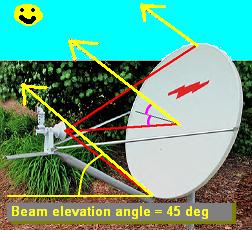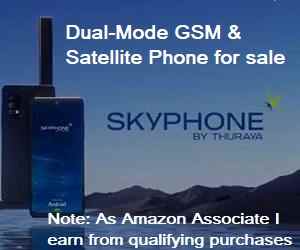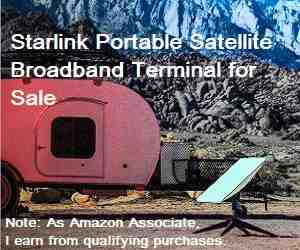1. The Lacuna meter should give an increase in noise level every time you pass any satellite. The noise power reading will enable you to peak up on any satellite and any polarisation.
If a particular programmed carrier is being searched for, it will lock up when it finds the right satellite, but ONLY if the polarisation has been set correctly and the LNB LO frequency is the same as that used by the person who programmed the Lacuna. The Lacuna simply looks for a carrier at an L band (cable) frequency with a particular symbol rate.
In the area of the sky under consideration the satellites are in a sloping line, higher up towards south and lower down towards the west.
Once you have found a satellite, then the others must be either higher up to the left or lower down to the right. It is helpful to mark the found satellite and then go searching. You can always go back and start from that position again. Each time you find a new satellite note its elevation angle exactly.
If you can successfully identify any satellite, then count along the orbit till you come to the corrrect one. You can also read the elevation scale and then adjust the elevation scale by the respective relative amount and thus target the wanted satellite immediately. e.g. If you found Eutelsat at 10E (elevation=37.6) and wanted satellite is Eutelsat W6 21.6E (elevation=44.7) then from your intitial position increase the elevation by 7.1 deg.
2. My calculations: Assuming your location 33 deg 52 min N, 42 deg 25 min E.
Satellite Elev Az Pol
ArabSat 26.2E 46.9 203.5 22.6
EutW6 21.5E 44.7 210.4 28
Astra 19E 43.4 213.5 30.4
Eut W2 16E 41.5 217.7 33.5
HotB 13E 39.6 221.3 36.2
EutW1 10E 37.6 224.7 38.6
EutW3A 7E 35.5 227.9 40.8
NSS7 22W 12.6 251.0 53.3
Not all satellites may have beams towards you so may not be detectable. Other satellites exist. Azimuth bearings are magnetic compass and are approximate - any error will be the same for all bearings however.
3. You found something at 35 deg elevation and 260 azimuth. This pair seems improbable. I have inserted NSS7 into the satellite list above. This is at 251 deg azimuth, but only 12 deg elevation. Are you reading your elevation scale correctly ? With the front face of the dish vertical the beam elevation will be somewhere around 20 to 30 deg (possibly 22.5 deg). The scale should read say 22.5 deg. I don't know what is the tick mark. It may be a nut, it may be the edge of the metal through the slot etc. If there are opposite (reversed) scales on either side you need the correct scale.
4. Polarisation
This may be the whole problem. Setting polarisation is a two step process.
First set to the nominal downlink polarisation. What nominal polarisation have you been told ? If Horizontal then you need to turn the feed assembly so that the broad faces of the LNB waveguide are on either side.
Second, while facing towards the satellite, rotate the feed asembly 28 deg clockwise (for positive polarisation angles). An inclinometer put sideways across the BUC helps set this angle accurately. There is probaly a tiny crude scale on the feed throat clamp. You can use this to measure the amount of movement required (28 deg) but ignore any +/- signs.
5. There is a possibility that the Lacuna is pre-set to detect a carrier on the opposite polarisation to your wanted iDirect downlink carrier. Your iDirect receiver should show green when the wanted carrier is detected.
You can peak up using the iDirect software.

Best regards, Eric.



